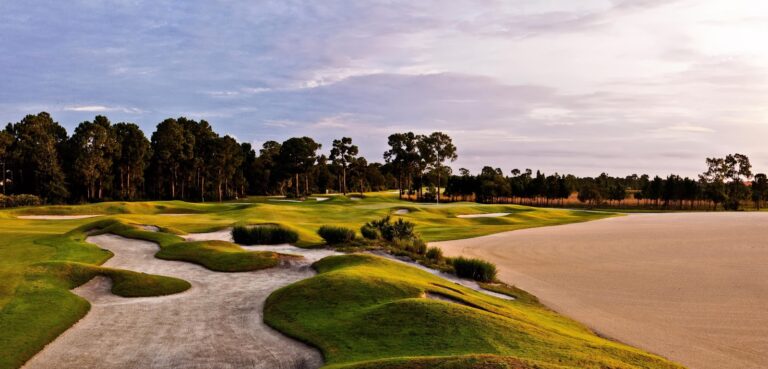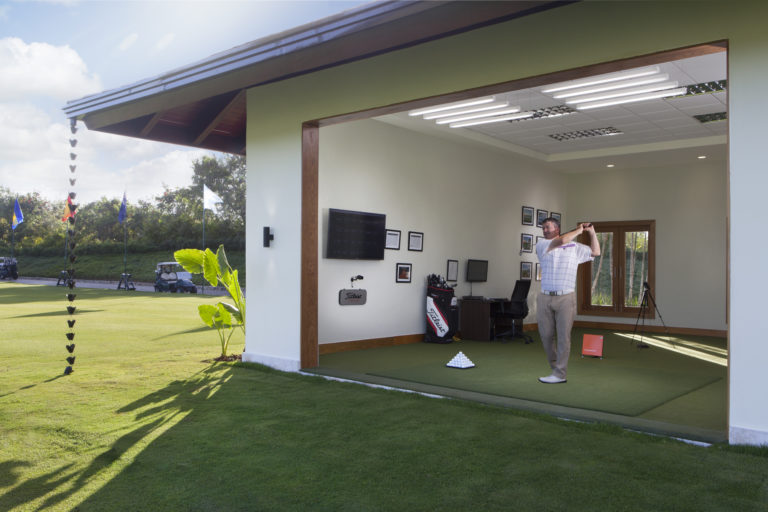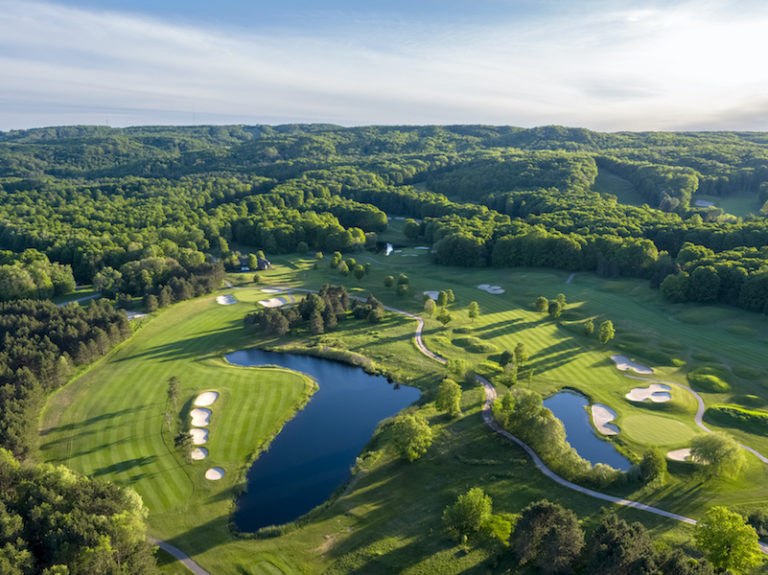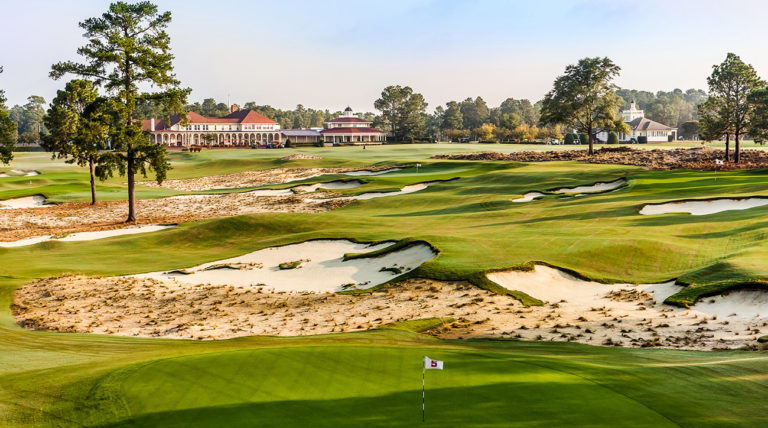While not as well-known as its popular neighbors, this is a course that needs to be experienced
LITTLESTONE, England (July 15, 2019) — When people start talking about playing golf in Great Britain, the conversation always seems to focus on those historic layouts in Scotland such as St. Andrews (both the Old and the New Course), Turnberry, Carnoustie, Muirfield, Royal Dornoch, Royal Troon, Gleneagles, and others.
While those courses deserve to be on everybody’s ‘must play’ list, there are a number of great golf courses in England – located immediately south of Scotland – that will satisfy your craving for the classic, British links golf experience!
One of my personal favorites is the Littlestone Golf Club, which is located along the south coast of one of England’s more southern counties, Kent. I played Littlestone in June 2018, and my memories of the experience are clear and vivid.
The scorecard for England’s Littlestone Golf Club says it all: “The Championship Links.” Those three words accurately describe what the Littlestone Golf Club is now, always has been, and always will be. What you want is what you will get when you play Littlestone – true links golf, as seen on television.
There’s an appeal to playing Littlestone that’s difficult to describe. The pleasure that one gets by playing golf, especially good golf, at Littlestone is further complemented by the magnificent views of the adjacent English Channel, the nearby white cliffs of Folkestone and Dover, and the French coastline on a clear day.

Great Neighbors
When golfers talk about visiting England’s county of Kent for golf getaways, Littlestone Golf Club, near Romney Marsh, can get overlooked, but it’s a course that deserves as much praise and respect as the other championship links courses in the county – Royal St. George’s (in Sandwich), Prince’s (in Sandwich), and Royal Cinque Ports (in Deal).
While the three aforementioned courses have all hosted The Open Championship, Littlestone is in the same conversation as it has hosted Open Championship qualifiers on more than five occasions, as well as many England Golf events over the years.
It’s worth noting that Littlestone will be the host of The Junior Open (conducted by the Royal & Ancient Golf Club of St. Andrews) in 2020 (to be contested at the same time as The Open Championship, which will held nearby at Royal St. George’s. Littlestone is located about an hour’s drive from the trio of Royal St. George’s, Prince’s, and Royal Cinque Ports, and is a must-play experience to finish off what is the most enticing tour of championship links golf in the south of England.
If you conjure up images of what a true links course would look and play like, Littlestone fits the bill. It’s a course that is as fun to play as it is demanding to handle. Even Littlestone’s actual address – alongside St. Andrews Road – is very appropriate for a classic links golf destination. At Littlestone, your links golf experience will be everything you hoped it would be and then some.
Opened in 1888, you sense the historic atmosphere at Littlestone, as soon as you step foot on its premises. A degree of excitement and anticipation rushes through your body as you catch your first glimpse of the Littlestone Golf Club sign, which marks your arrival at one of England’s finest and most unheralded championship links courses.
Littlestone’s current layout is a reflection of the design expertise of three experienced golf course architects – the original architect William Laidlaw Purves, James Braid, and then Alistair McKenzie. Braid was hired to insert strategic bunkers on the course and McKenzie’s wanted to improve the look and feel of two par-three holes – the sixth and 17th. He also modified the greens on the fifth, eighth, and 18th holes. With the exception of some tee boxes at the fourth, seventh, ninth, 11th and 12th which were built in 1997, the course has remain unchanged since McKenzie’s ideas were incorporated back in the mid-1920s.
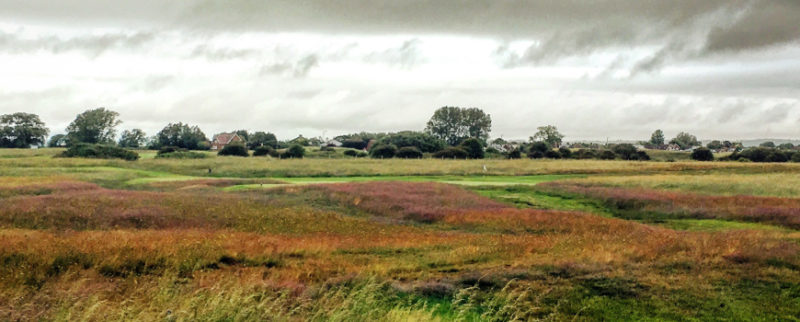
Star Appeal
You also can’t help but feel the need to make time after your round for a tour of the old traditional two-story, brick clubhouse which has a slightly weathered, yet distinguished, look to its exterior. As you stand on the 1st tee, the clubhouse is right behind you. As walk off the 18th green, the clubhouse is on your right.
In fact, as you stroll along the grounds and walk around the old brick clubhouse, you can sense the latent presence of some of the world’s major champion golfers, who have played at Littlestone such as Sergio Garcia, Justin Rose, Darren Clarke, Retief Goosen, Ben Curtis, and Tony Jacklin. Other prominent golfers who have played at Littlestone include Jeff Maggert, Lee Westwood, Nathaniel Crosby, and Dai Rees.
When Garcia first played at Littlestone, it was in 1996 when he participated in the Boys Amateur Championship. While he did not win, Garcia did receive the John Garner Trophy for the best player under the age of 16. Rose also played in that event in 1996. Clarke has the course record at Littlestone – a 65. Maggert once played in an Open qualifier at Littlestone. When Westwood played at Littlestone, he also attempted to qualify for the Open as an amateur.
Another interesting Littlestone story involves Curtis, who won the Open in 2003, when it was played at nearby Royal St. George’s. Just prior to that Open, Curtis didn’t have a caddy so officials at Royal St. George’s called Littlestone which had a member by the name of Andy Sullivan who had some experience as a caddy. Sullivan agreed to carry Curtis’ bag that week. That was a smart decision by Sullivan. In preparation for the Open, Curtis played a practice round at Littlestone.
Less than a week later, Curtis was holding the Claret Jug and Sullivan could say that he had worked for ‘The Champion Golfer of the Year.’ As for Jacklin and Rees, they once played in an exhibition match at Littlestone.
Year-Round Access
Golfers have year-round access to Littlestone because of the unique microclimate that exists along this section of the Kent coastline, which makes it one of the driest places in Britain. As a result, the firm terrain produces hard and fast fairways that are beautifully defined by the natural dunes, so typical of links golf.
The temperate weather also means the course is well-manicured throughout the year. The greens are firm, true and well-paced and have the reputation of being some of the best in England.
At Littlestone, which features five sets of tees, the first and last holes are strong potential birdie opportunities.
As for the other 16 holes, securing par is always a worthy accomplishment, especially on holes played into the breeze.
Mother Nature at Play
The degree of difficulty at Littlestone is always impacted by the rough and the wind, which comes whipping off the nearby English Channel. The rough never really changes at Littlestone. To say that the rough can be penal at Littlestone is an understatement, so try your best to avoid it at all costs. Too many of your balls that stray into the rough may never be found, at least by you.
Occasionally, the golfing gods will be kind to you and you’ll find your ball in the rough with a great lie, but that’s more the exception than the rule. The strength and direction of the wind at Littlestone changes from day to day, often within the course of your round, delivering the thrill, joy, and challenge of links golf.
At Littlestone, the first hole is somewhat odd in that the difference between the front tees (red) and the back tees (blue) is just a few yards. At the par four 1st, the hole measures 297 yards for the pros whilst for the ladies, hitting from the red tees, it’s still just 294 yards.
Littlestone’s opening hole ranks as the easiest hole on the golf course, but it’s often played into the wind and the presence of two menacing bunkers near the entrance to the green emphasizes the importance of the right club selection for your approach. While those two sand traps at the 1st appear to hug the front of the green, there is actually lots of room between the bunkers and the front of the putting surface.
Littlestone’s Special Features
At Littlestone, you’ll find a few inconveniences scattered throughout the premises which add to its ever-present allure and mystique – fairway pot bunkers are frequently found on the course; small depressions, known as bowls and hollows, are a common sight in the fairways and the rough; gorse bushes appear in the rough at the third, fourth, and fifth holes; a small stream crosses the fairway at the second and seventh holes, while it runs alongside the entire fairway at the 11th hole; and most of the greens have significant undulations. At Littlestone, multi-tiered greens are the norm.
Because of the steadiness and intensity of the wind, trees don’t really exist at Littlestone, but be on the lookout for the ‘lone tree’ that sits to the right of the fifth fairway and the “lone bush” that appears to the right of the 16th fairway.
At Littlestone, most of the entrances to the green are bunker free which enables you to land your approach short of the green, thereby giving the ball a chance to release to the pin. And, believe it or not, some greens at Littlestone are bunker-free, but that is the exception and not the norm.
At Littlestone, when you make the turn from the ninth green to the 10th tee, that transition is done ‘out in the country,’ which is also the most distant part of the golf course from the clubhouse. So, at Littlestone, you literally play the “outward” half to the ninth green and then come home by playing the “inward” half to the 18th green.
As for the cost to play Littlestone, it’s very reasonable. The green fee is just £80 in the summer and less in the winter – just £50 – which represents incredible value for a championship links of this quality.


